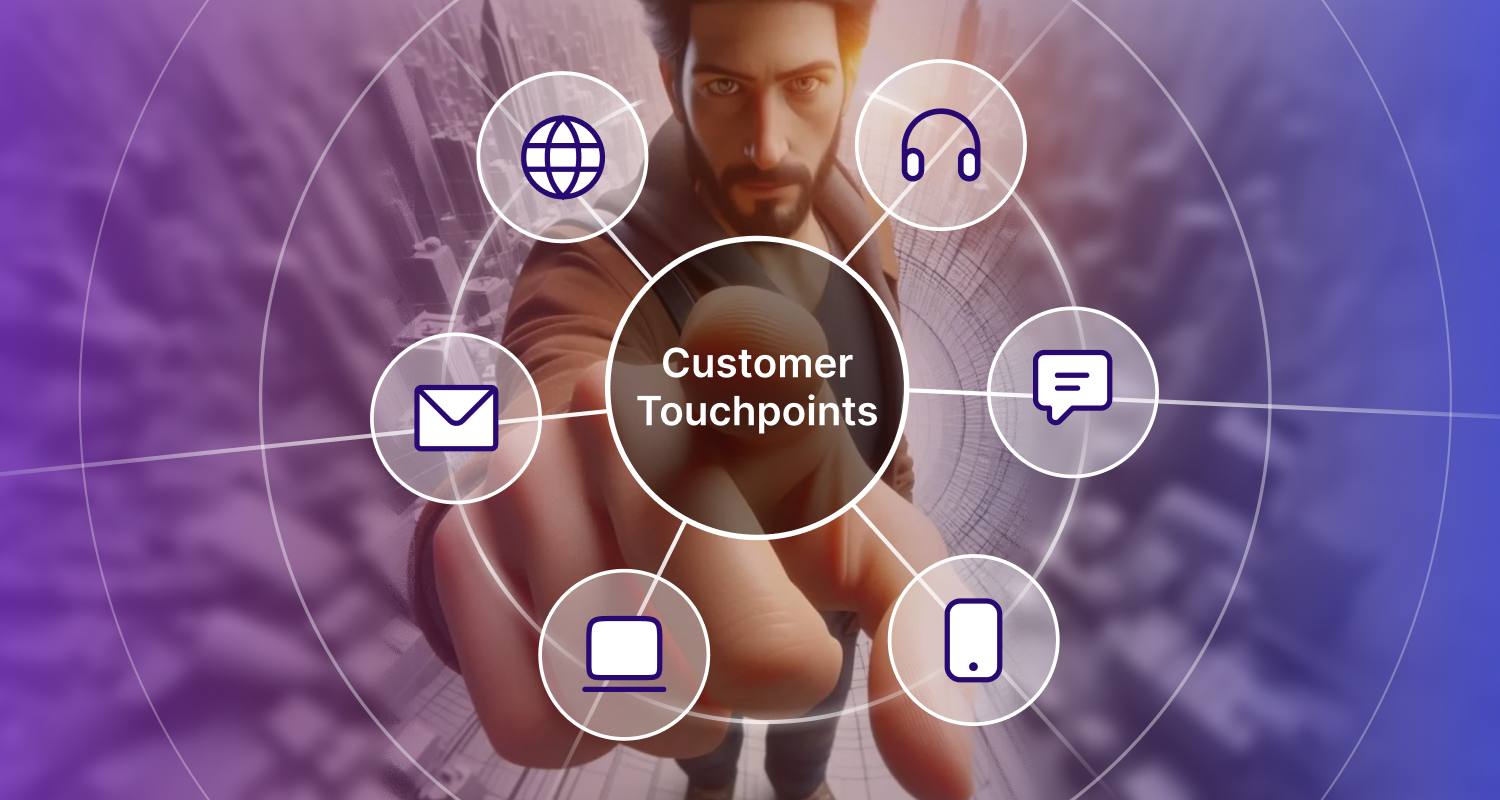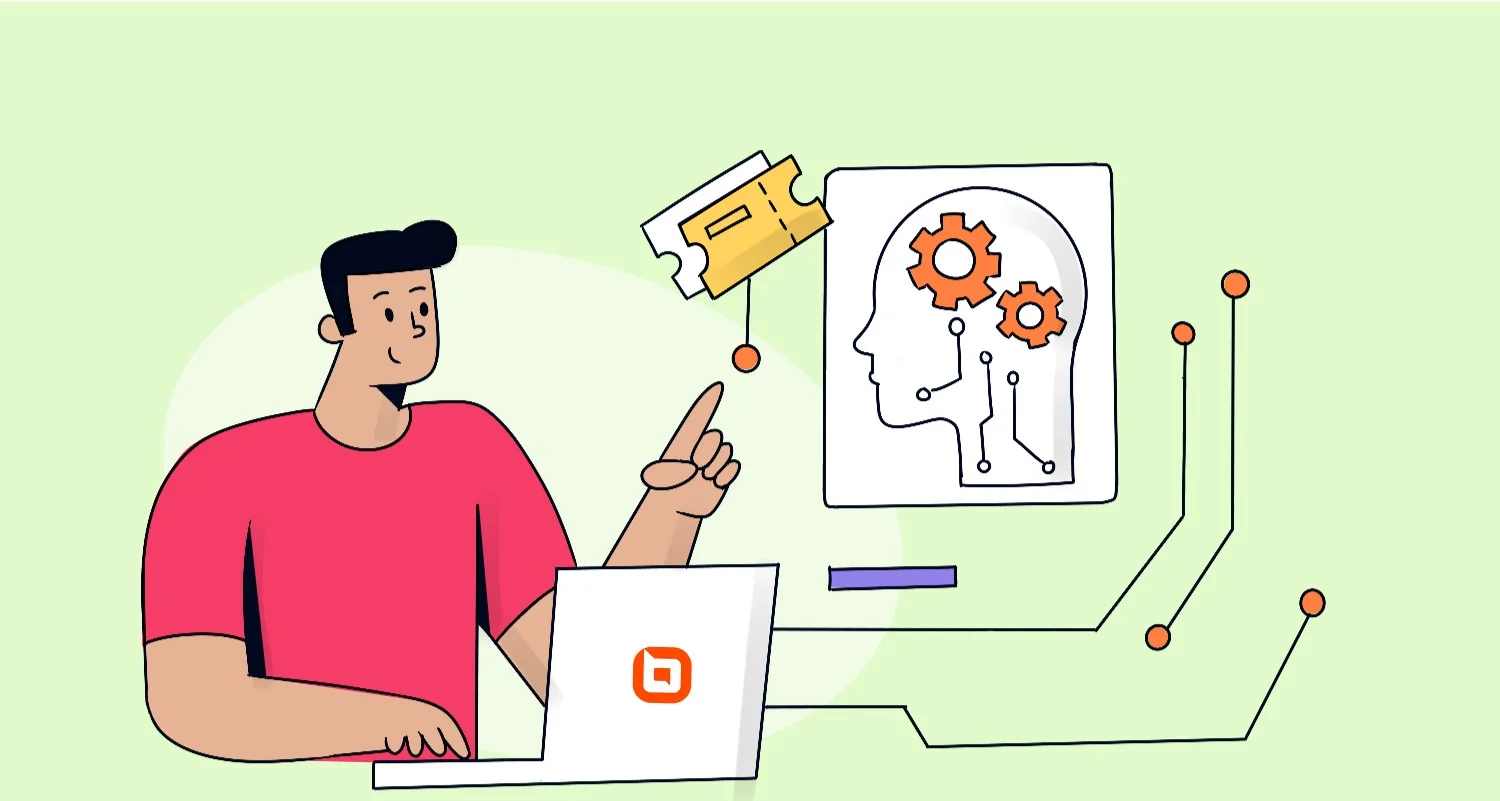Businesses must provide exceptional customer experiences to satisfy customers. To better improve customer experience, brands should identify and optimize their customer touchpoints.
Customer touchpoints comprise all the moments where your company is in contact with customers. These engagement points form the basis of most customer service interactions and determine whether customers will stay loyal to your business.
A research study by Calabrio shows that 97% of customers and 98% of customer service managers agree that customer service interactions impact brand loyalty.
Brands that focus on their customer interaction points can significantly improve customer loyalty and reduce customer churn.
In this blog post, we’ll explore what customer touchpoints are all about. We’ll also show you ways to identify them, and we’ll give real-life examples of how they impact the customer journey.
What are customer touchpoints?
Customer touchpoints are any points of contact between a customer and a business. They enable customers to understand the business better and to get to know a company’s products and services.
Customer touchpoints involve all platforms through which a customer interaction occurs. These include:
- Social media
- Support staff
- Live chats
- Websites
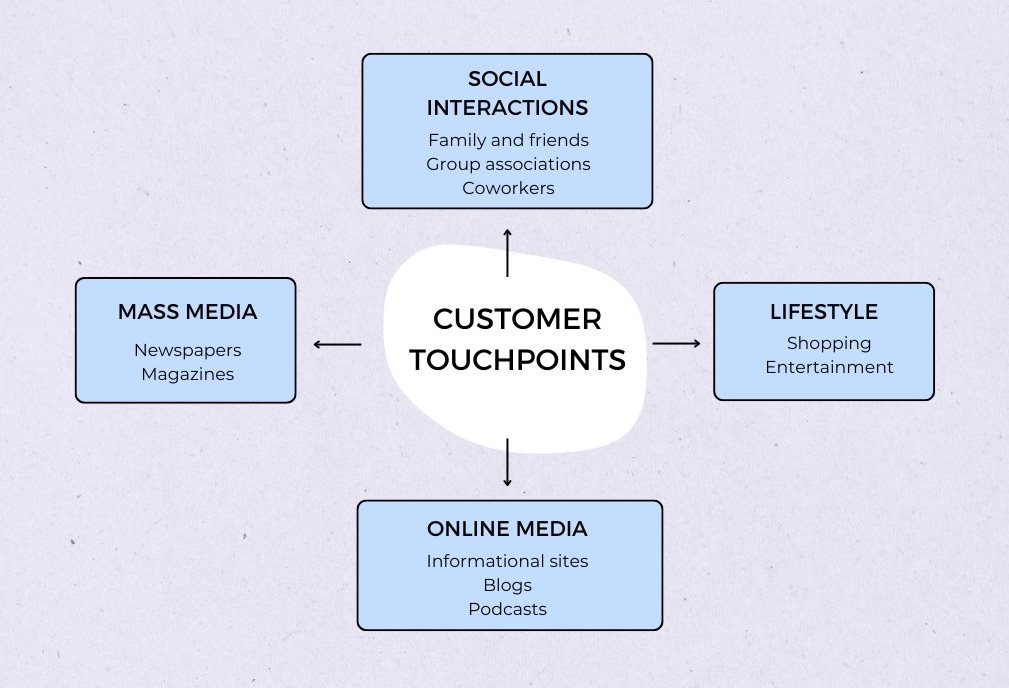
These customer engagement points offer an opportunity for better consumer interactions that strengthen bonds between you and your customers while also enhancing brand perception.
Customer touchpoint examples
Businesses can interact with customers at different stages of the customer journey, including before a purchase, during a purchase, and after a purchase.
Below are some detailed customer touchpoint examples.
Pre-purchase
Pre-purchase touchpoints refer to the various customer interactions that occur before a customer makes a purchase. They play a crucial role in shaping the customer’s brand perception.
Here’s a detailed discussion of pre-purchase touchpoints:
Social media platforms
Customers might discover your brand through social media ads, content, or influencer marketing. Engage with them through comments or messages to create a positive first impression.
Online reviews and ratings
Customers often research online reviews before purchases. Positive reviews on G2, or other sites like Capterra, build trust and encourage potential customers to choose you.
Digital marketing content
Blog posts, articles, or informative videos addressing customer pain points demonstrate your expertise and establish you as a thoughtful leader. This valuable content positions you as a trusted resource even before a purchase.
Company events
Company events such as product launches, conferences, and seminars allow potential customers to experience your brand firsthand. They can learn about your products, see them in action, and interact with your team.
This builds trust, clarifies product benefits, and generates excitement around your brand.
During purchase
These customer touchpoints include all the interactions a customer has with your brand as they move towards completing a purchase. These customer engagement points significantly impact a customer’s experience and satisfaction.
Additionally, these interaction influence customers’ decisions to complete the purchase and return. Below is a breakdown of some critical customer interaction points during a purchase:
Product catalogs
Product catalogs spark customers’ interest with visuals and descriptions. They act as an information hub for making informed decisions and can be personalized for a tailored experience.
Chatbots
Live chat options or chatbots on online stores offer real-time support and address customer queries while purchasing. Chatbots can lead to increased conversion rates, improved customer satisfaction, and reduced customer churn.
Customer onboarding
Customer onboarding is vital in helping customers get acquainted with a product or service. Providing clear instructions, tutorials, and support resources helps customers navigate the onboarding process smoothly.
Point of sale
A point-of-sale system is often the final consumer interaction point with your brand before they complete a purchase. A smooth, efficient, and friendly checkout process can solidify a positive buying experience and encourage repeat business.
Post-purchase
Post-purchase touchpoints are interactions after a customer has bought your product or service. They are crucial for building lasting relationships and fostering customer loyalty.
Here’s a breakdown of some vital post-purchase touchpoints:
Thank you letters
Sending personalized customer thank-you notes or emails immediately after a purchase expresses gratitude to customers for choosing your product or service. This simple gesture sets a positive tone for future interactions.
Product feedback surveys
Gathering customer feedback through post-purchase surveys provides valuable insights into customer satisfaction and product performance.
By soliciting feedback on the customer service experience, brands can check for areas to improve on and tailor their offerings to better meet customer needs.
Customer support channels
Providing responsive and helpful customer support through omnichannels support such as phone, email, and live chat ensures customer satisfaction.
Customer success programs
Offering dedicated customer success programs can provide ongoing support and ensure that customers are maximizing the value of their purchases.
Customer loyalty programs
Rewarding repeat customers through customer loyalty programs or exclusive discounts incentivizes future purchases and strengthens brand loyalty.
Self-service resources
A study by Nice shows that almost all companies and most customers value self-service. Offering self-service resources such as FAQs, knowledge bases, and online tutorials empowers customers to find solutions to common issues independently.
By providing accessible self-service options, businesses can reduce support inquiries and improve customer satisfaction.
How can you identify customer touchpoints?
You need to identify customer touchpoints and recognize how customers interact with your business throughout their journey. Brands should identify these interaction points and optimize them to improve the customer experience.
Here’s a guide with a few customer touchpoint examples to help you identify them:
Put yourself in the position of your customers
Understand your customers’ perspective to discover how they interact with your brand. Observe their actions while purchasing products or communicating with sales staff.
Conduct customer research
Use customer satisfaction reports, focus groups, and interviews to gain customer insights into their journey and the customer touchpoints they encounter. Ask them about their experiences at different stages and how you can improve each interaction.
Use website analytics
Look for existing data sources that can reveal customer touchpoints. This could include:
- Website analytics that show user behavior
- Customer service logs that indicate how customers reach out
- Social media insights that demonstrate online interactions
Map the customer’s journey
A customer journey map helps you visualize all the stages a customer goes through, from initial awareness to post-purchase experience.
This might involve online research, social media interactions, visiting your website, contacting customer service, purchasing, and receiving support after the sale.
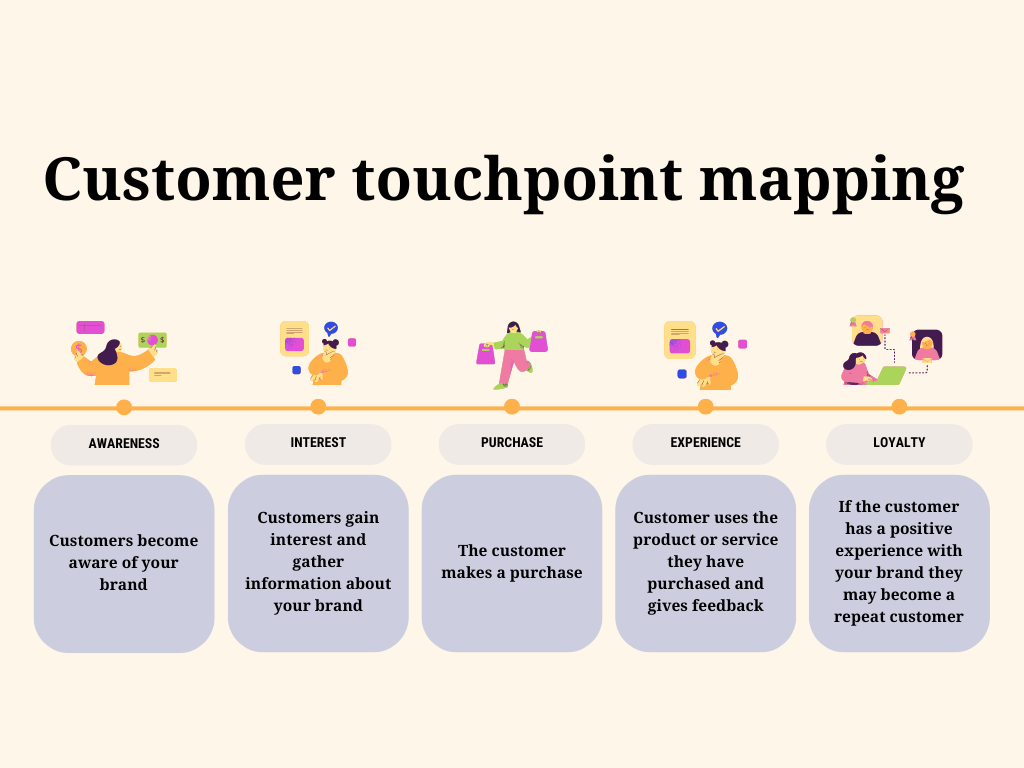
Understand your target audience
You should know the demographics of your ideal customer. By knowing your ideal customer’s interests and online behavior, you can predict where they might encounter your brand.
Gather customer feedback
Use feedback to learn more about your customers’ experiences and interactions with your brand. Surveys, reviews, and direct feedback can provide valuable information about touchpoints that are significant to them.
How to improve your customer touchpoints
As a brand, you must make sure that every touchpoint contributes to a positive customer experience. Ensure that all your customer journey interactions meet customers’ expectations to increase your customer satisfaction ratings.
Improving your customer interaction points is an excellent strategy for meeting customer expectations. Here are a few tips on how to improve your customer touchpoints.
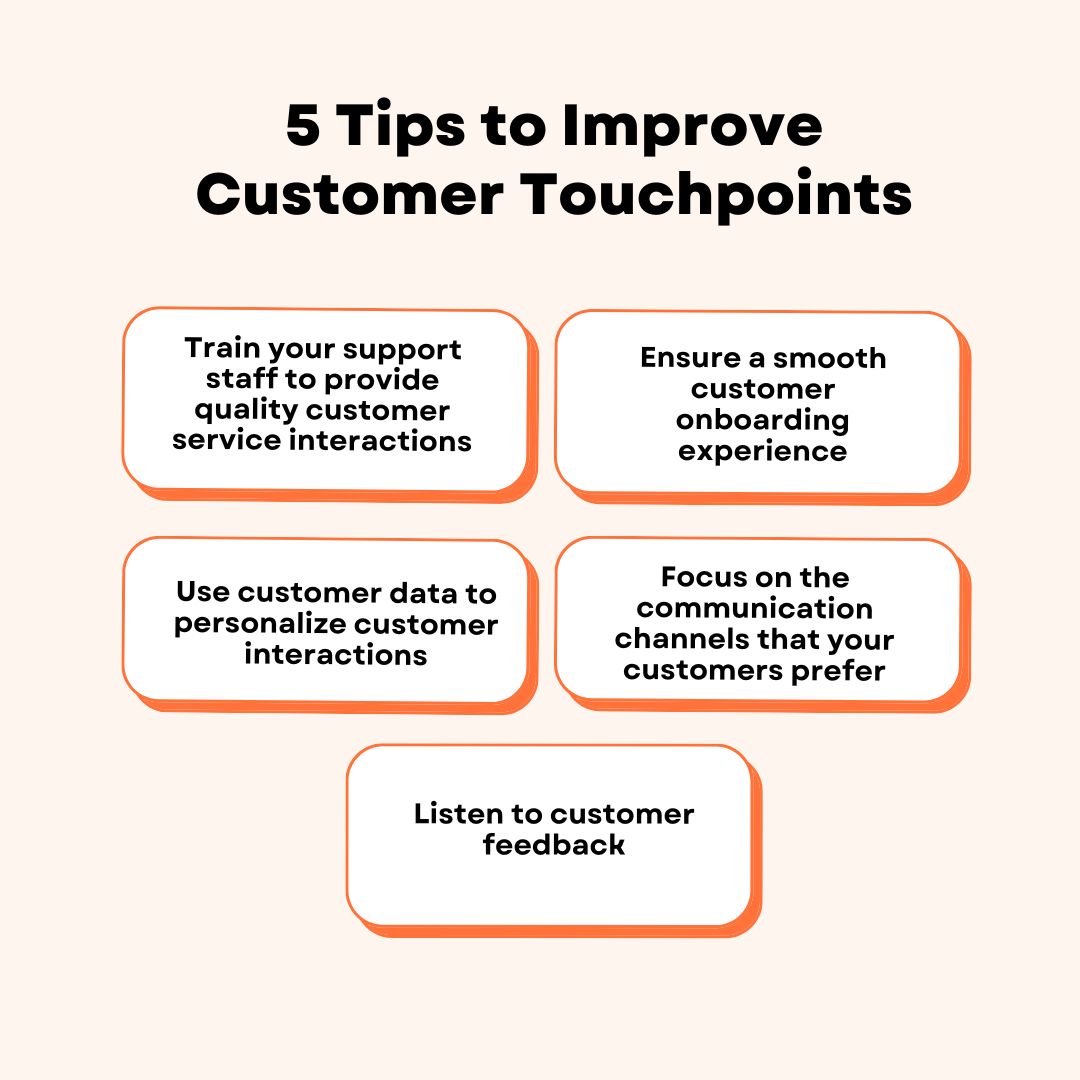
Train your support staff to provide quality customer service interactions
Implement comprehensive training programs for your customer service staff to ensure they have the necessary product knowledge, customer service skills, and empathy to assist customers.
Equip your customer service team with the necessary tools such as help desk software or live chat systems, to offer prompt and efficient service.
Additionally, empower your staff with comprehensive knowledge base software to help agents find all-round solutions to customer issues quickly.
Ensure a smooth customer onboarding experience
A good onboarding process ensures customers experience excellent customer interactions from the get-go and creates a good first impression for your brand. You can enhance the onboarding process and improve customer interaction points by:
- Providing clear instructions on how to use the product or service.
- Giving helpful tips using FAQ software.
- Guiding customers through the initial setup or first use of your product or service.
Additionally, simplify your sign-up or purchase process to improve pre-purchase or purchase consumer interaction points.
You should also offer how-to videos or product or service support resources, and you can send introductory emails that outline the key features and benefits of the product or service.
Use customer data to personalize customer interactions
Analyze customer data—such as purchase history, preferences, and behaviour—to tailor each customer interaction. Other ways you can use customer data to improve customer service touchpoints include:
- Proactively reaching out to customers with tailored content and assistance.
- Sending follow-up emails after each customer service interaction.
- Reaching out to customers via their preferred communication channel.
- Addressing the customer by their name to make interactions feel personal.
Focus on the communication channels that your customers prefer
Identify each customer’s preferred communication channel—whether social media, email, phone, or live chat—and communicate or provide support via these mediums.
For instance, if they usually reach out via social media, then contact them via social media platforms. Optimize each customer communication channel to ensure customers always enjoy seamless experiences.
Ensure you promptly address and reply to questions across all platforms to demonstrate to customers that you are consistently available and responsive.
Listen to customer feedback
Gather feedback from your customers to understand the experience they had at each customer interaction point. Use surveys to find out what areas to improve on in your customer engagement strategy.
You can also ask for feedback directly from customers at various touchpoints, such as at the checkout, to understand whether they are satisfied or not. Analyze these feedback points to identify areas for improvement and issues that need to be addressed.
Enhance support experiences at all customer touchpoints
Customer touchpoints provide excellent opportunities to build lifelong advocates for your brand. Every moment customers encounter your brand, from social media to check out, shapes their perception.
By constantly improving your customer touchpoints, you can create a seamless and positive customer journey that fosters loyalty and drives business growth. Ready to unlock the potential hidden within your customer interaction points?
BoldDesk help desk software empowers you to streamline communication across various touchpoints. Contact us to learn how you can provide exceptional post-purchase support through email and live chat. Book a demo or request a free trial to discover how to create positive customer interactions with BoldDesk.
We hope this blog was helpful. Do you have any additional ideas? Feel free to share them in the comment section below.
Related articles


















 Email Ticketing System
Email Ticketing System Shared Inbox Software
Shared Inbox Software Multi Brand Help Desk
Multi Brand Help Desk Internal Help Desk Software
Internal Help Desk Software Trouble Ticketing Software
Trouble Ticketing Software Mobile Help Desk
Mobile Help Desk 










